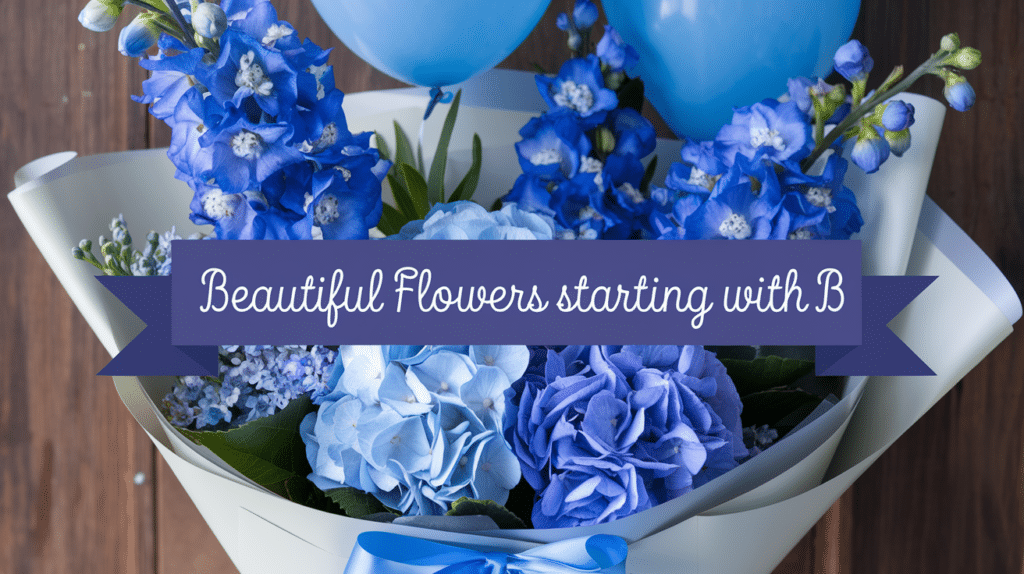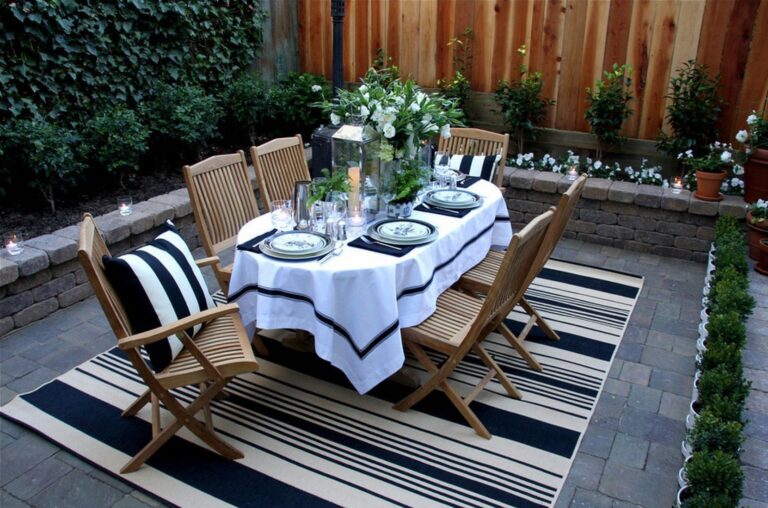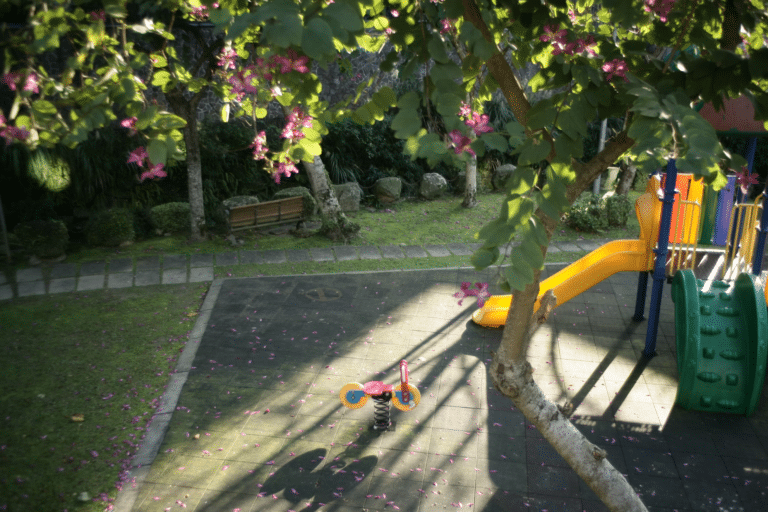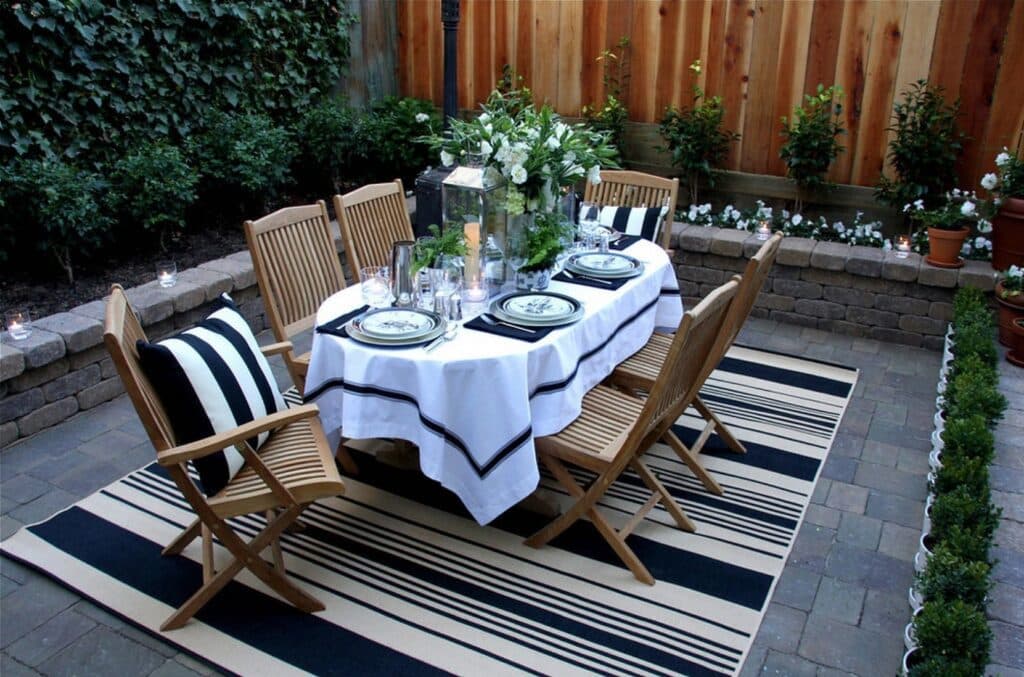Finding the right flowers for a garden can feel overwhelming with thousands of options available. Many gardeners struggle to sort through countless plant varieties when planning their perfect outdoor space.
Flowers that start with B offer a wonderful selection of plants that can add color and charm to any garden.
This blog will show readers 99 beautiful flowers starting with B that they can plant in their yards. It includes details about each flower’s growing needs, appearance, and special features.
Gardeners will learn about common options like Begonias and Bachelor’s Buttons, plus lesser-known beauties that might become new favorites. These fantastic “B” flowers can make any garden stand out.
How to Care for Flowers Starting with B
Flowers that start with the letter B bring beauty and variety to any garden space. From bright begonias to bold black-eyed susans, these plants offer options for nearly every growing condition.
Caring for these flowers that starting with B requires specific attention to their unique needs. This guide shares simple tips to help your “B” flowers grow strong and healthy all season long.
- Plant selection: People can choose begonia varieties that suit their garden conditions. Begonias thrive in partial shade and need well-drained soil to grow properly.
- Watering habits: Gardeners should water bachelor’s buttons only when the top inch of soil feels dry. This prevents root rot and helps the plants stay healthy throughout their growing season.
- Soil quality: Bluebells perform best in slightly acidic to neutral soil. Adding compost before planting creates a good foundation for these spring flowers.
- Sunlight needs: Black-eyed susans love full sun positions in the garden. They will produce more blooms when they receive at least six hours of direct sunlight daily.
- Pruning techniques: Butterfly bushes benefit from regular trimming to maintain their shape. Cutting back dead flowers encourages new growth and extends the blooming period.
- Pest control: Bird of paradise plants may attract insects like aphids. Using mild soap solutions can help control these pests without harming the flowers.
- Winter care: Bulb flowers such as bluebells need proper fall planting. They should be placed about three times as deep as the bulb height for best results.
- Container growth: Busy lizzies work well in pots and hanging baskets. They need consistent moisture but not soggy conditions to bloom continuously.
Flowers That Start with B
The plant world offers a wide range of flowers whose names begin with the letter B. This list shows 99 options that gardeners can choose for their utdoor spaces, from common varieties to rare finds.
Each entry includes basic information to help readers decide which flowers might work in their own gardens.
1. Bachelor’s Button
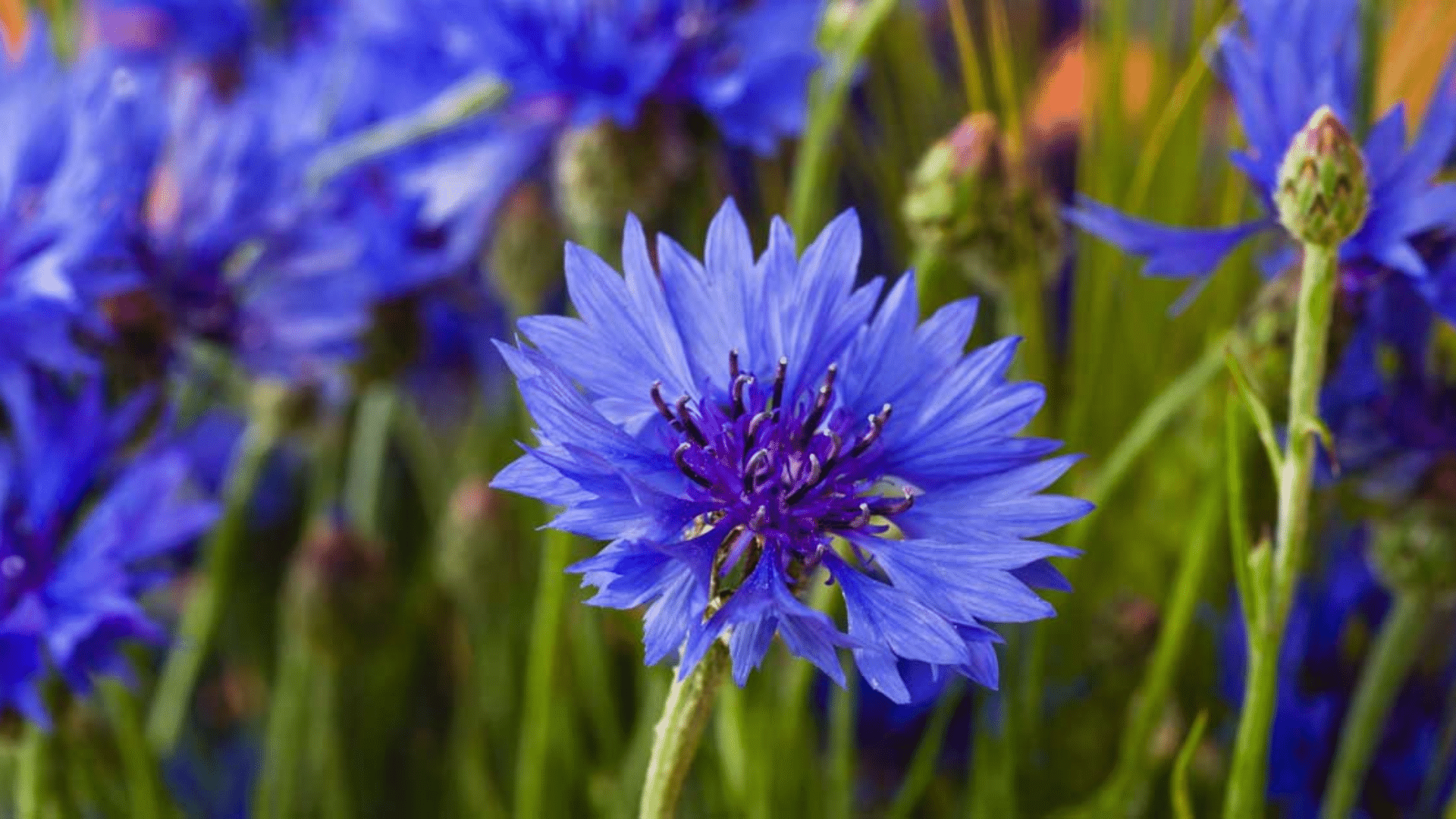
Bachelor’s Button is a vibrant, daisy-like flower with bright blue petals surrounding a dark center. It blooms for an extended period, making it a popular choice for ornamental gardens.
This hardy plant thrives in full sunlight and well-drained soil, attracting a variety of pollinators like bees and butterflies. It is also known by the name cornflower and is used in various traditional remedies.
| Scientific Name | Centaurea cyanus |
|---|---|
| Commonly Found Region | Europe, North America |
| Blooming Period | Late spring to summer |
| Symbolism | Independence, freedom |
| Benefits | Helps with headaches, supports blood circulation |
How to plant:
- Sow seeds in well-drained soil.
- Water regularly, but avoid over-watering.
- Plant in full sunlight.
Fun Fact: Bachelor’s Button is also known as cornflower and is traditionally used in floral arrangements for weddings.
2. Balloon Flower
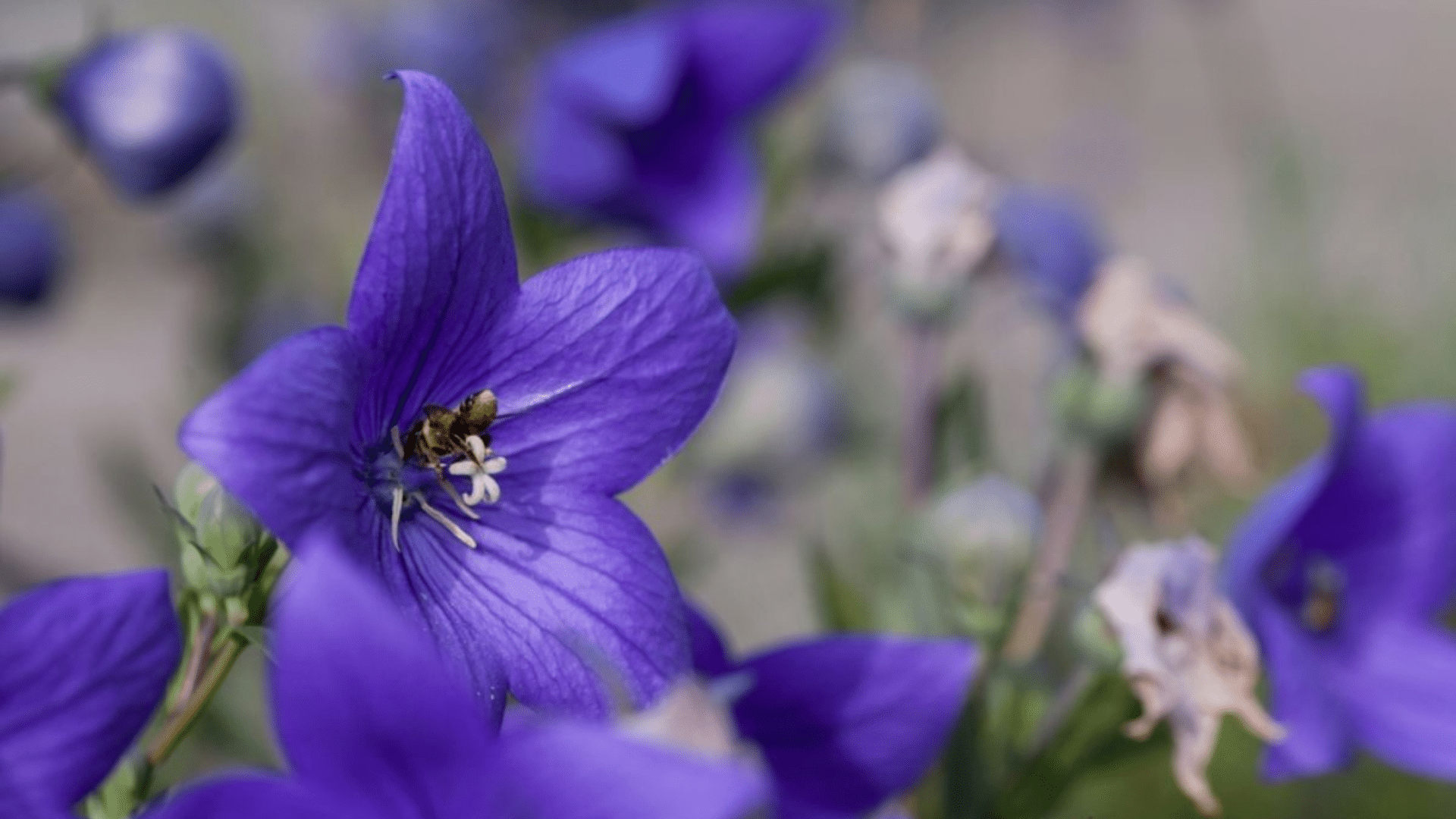
Balloon Flower gets its name from its unique balloon-like buds that open into star-shaped blossoms. The plant produces flowers in shades of blue, pink, or white, making it an eye-catching addition to garden borders.
It thrives in well-drained soil and full sunlight, blooming from mid-summer to fall. Its delicate flowers attract hummingbirds and bees.
| Scientific Name | Platycodon grandiflorus |
|---|---|
| Commonly Found Region | East Asia |
| Blooming Period | Summer to early autumn |
| Symbolism | Unfolding beauty, patience |
| Benefits | Soothes coughs, boosts immune system |
How to plant:
- Plant seeds or seedlings in fertile, well-drained soil.
- Position in full to partial sunlight.
- Water regularly, ensuring the soil remains moist.
Fun Fact: Balloon Flowers are often used in traditional Asian medicine to treat respiratory issues.
3. Balsam
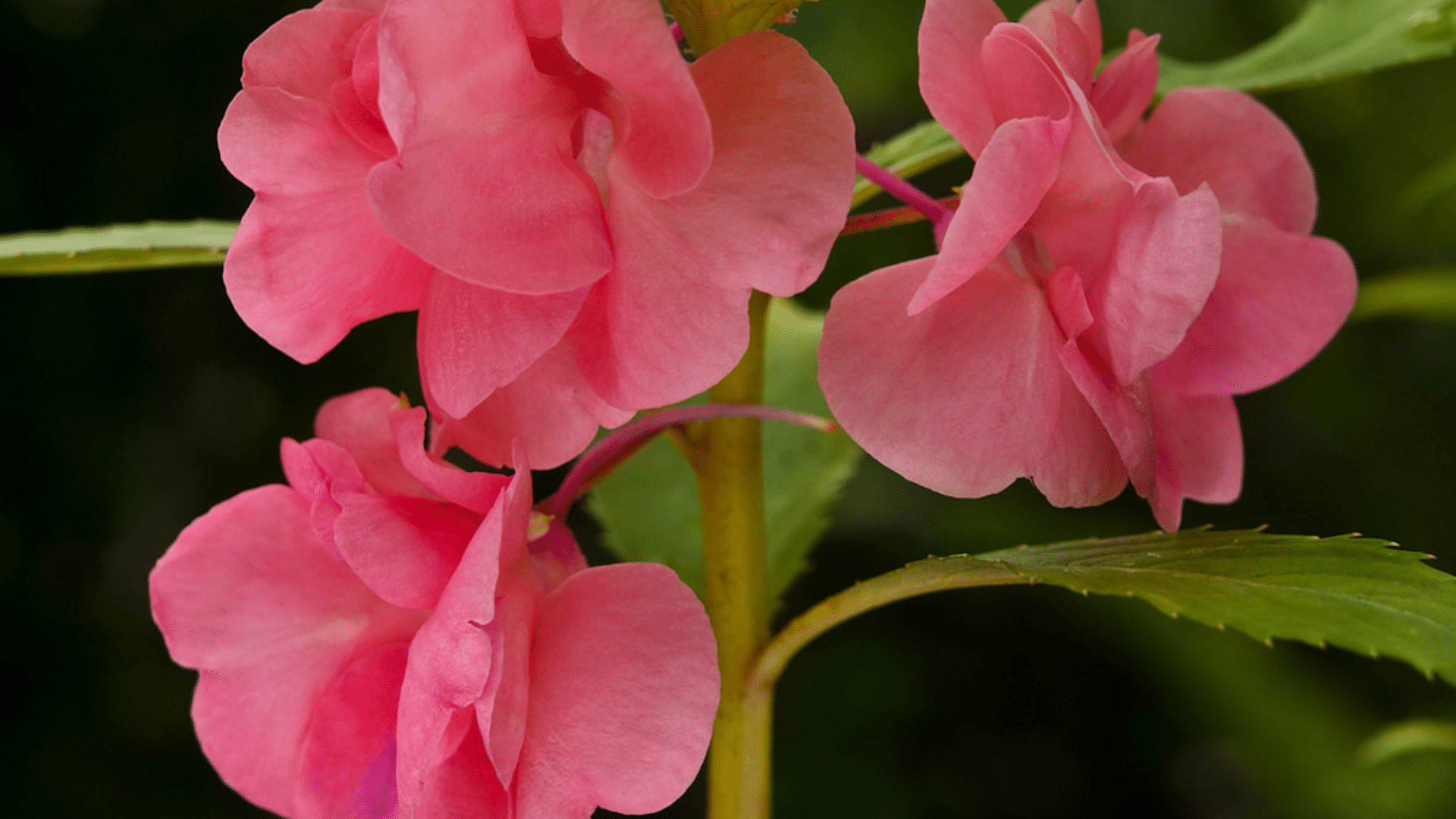
Balsam flowers are vibrant and come in colors like red, pink, and white, often blooming in clusters. They are shade-loving plants, ideal for areas with partial sunlight and are commonly found in hanging baskets.
Balsam plants also have a fragrant aroma, making them a favorite in ornamental gardens. They are easy to grow, making them a popular choice for both beginner and seasoned gardeners.
| Scientific Name | Impatiens balsamina |
|---|---|
| Commonly Found Region | Asia, Africa |
| Blooming Period | Summer to fall |
| Symbolism | Impatience, curiosity |
| Benefits | Used for skin care, alleviates headaches |
How to plant:
- Sow seeds in moist, well-drained soil.
- Place in a shaded or partially shaded location.
- Keep soil consistently moist for optimal growth.
Fun Fact: Balsams are often used in hanging baskets due to their trailing growth habit.
4. Bamboo Orchid
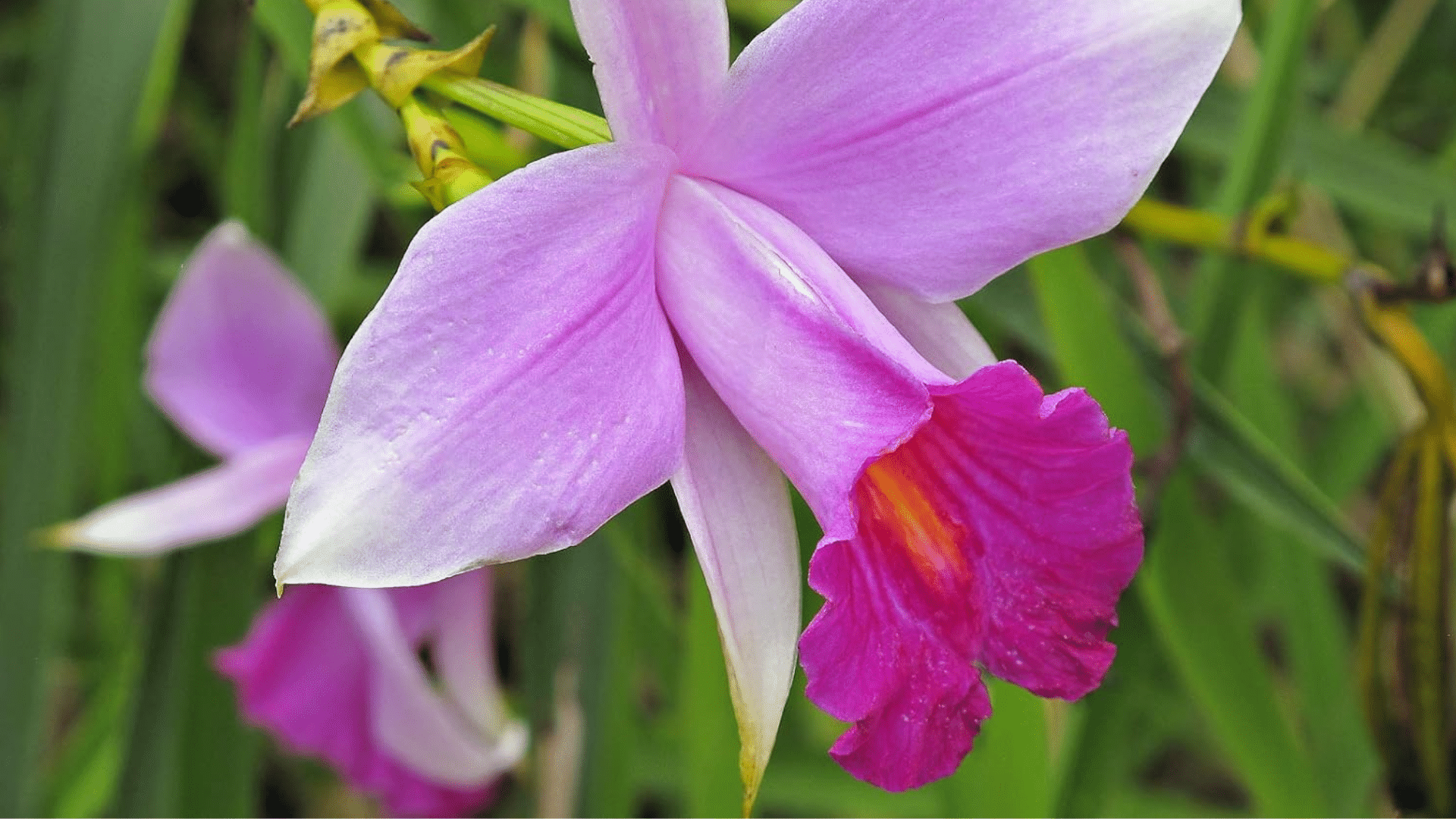
Bamboo Orchid is an exotic flower that blooms on bamboo-like stems, showcasing purple and white flowers with a sweet fragrance. It is native to tropical regions and often used as an ornamental flower in gardens and as a houseplant.
The plant requires a warm climate and thrives in partial to full sunlight. Its elegant blooms add a touch of tropical beauty to any garden or indoor space.
| Scientific Name | Arundina graminifolia |
|---|---|
| Commonly Found Region | Southeast Asia, India |
| Blooming Period | Winter to early spring |
| Symbolism | Luxury, elegance |
| Benefits | Used in aromatherapy and for relaxation |
How to plant:
- Grow in well-draining soil.
- Plant in partial shade or direct sunlight.
- Water regularly but ensure proper drainage.
Fun Fact: Bamboo Orchids are sometimes called “grass orchids” due to their growth pattern resembling bamboo.
5. Banks’ Rose
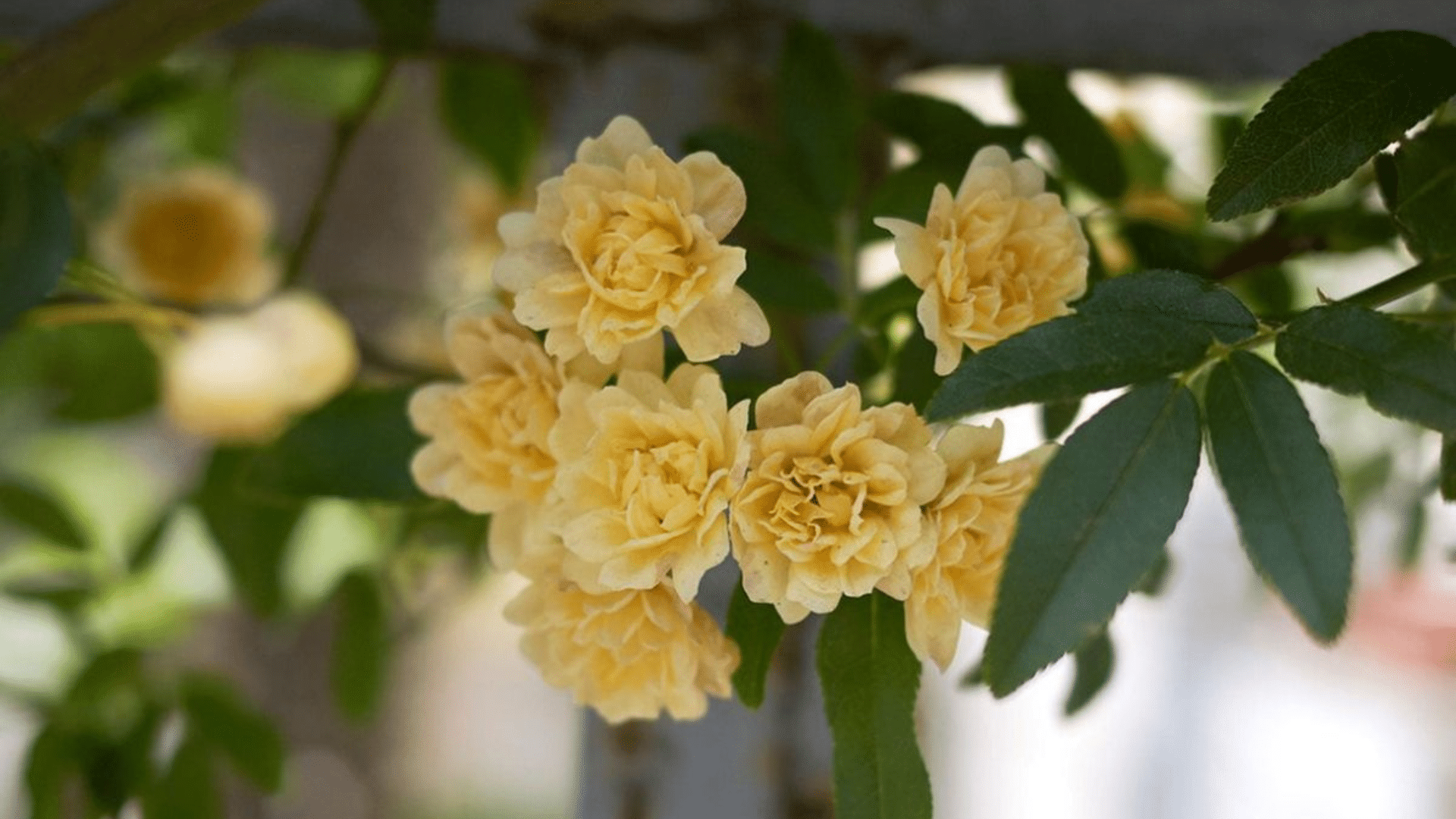
Banks’ Rose is a species of climbing rose that produces fragrant, creamy-white flowers in abundant clusters. It is a hardy rose that grows well in temperate climates, covering fences, trellises, or arbors with its graceful vines.
The plant is relatively low-maintenance, thriving in full sunlight and well-drained soil. It blooms in spring, making it a popular choice for early-season color in gardens.
| Scientific Name | Rosa banksiae |
|---|---|
| Commonly Found Region | China, Southeast Asia |
| Blooming Period | Spring to early summer |
| Symbolism | Innocence, purity |
| Benefits | Used in skincare, anti-aging properties |
How to plant:
- Plant in fertile, well-drained soil.
- Provide full sun exposure for best results.
- Prune after blooming for healthy growth.
Fun Fact: The Banks’ Rose is known for its fragrant and abundant flowers, often seen in traditional Chinese gardens.
6. Bishop’s Flower
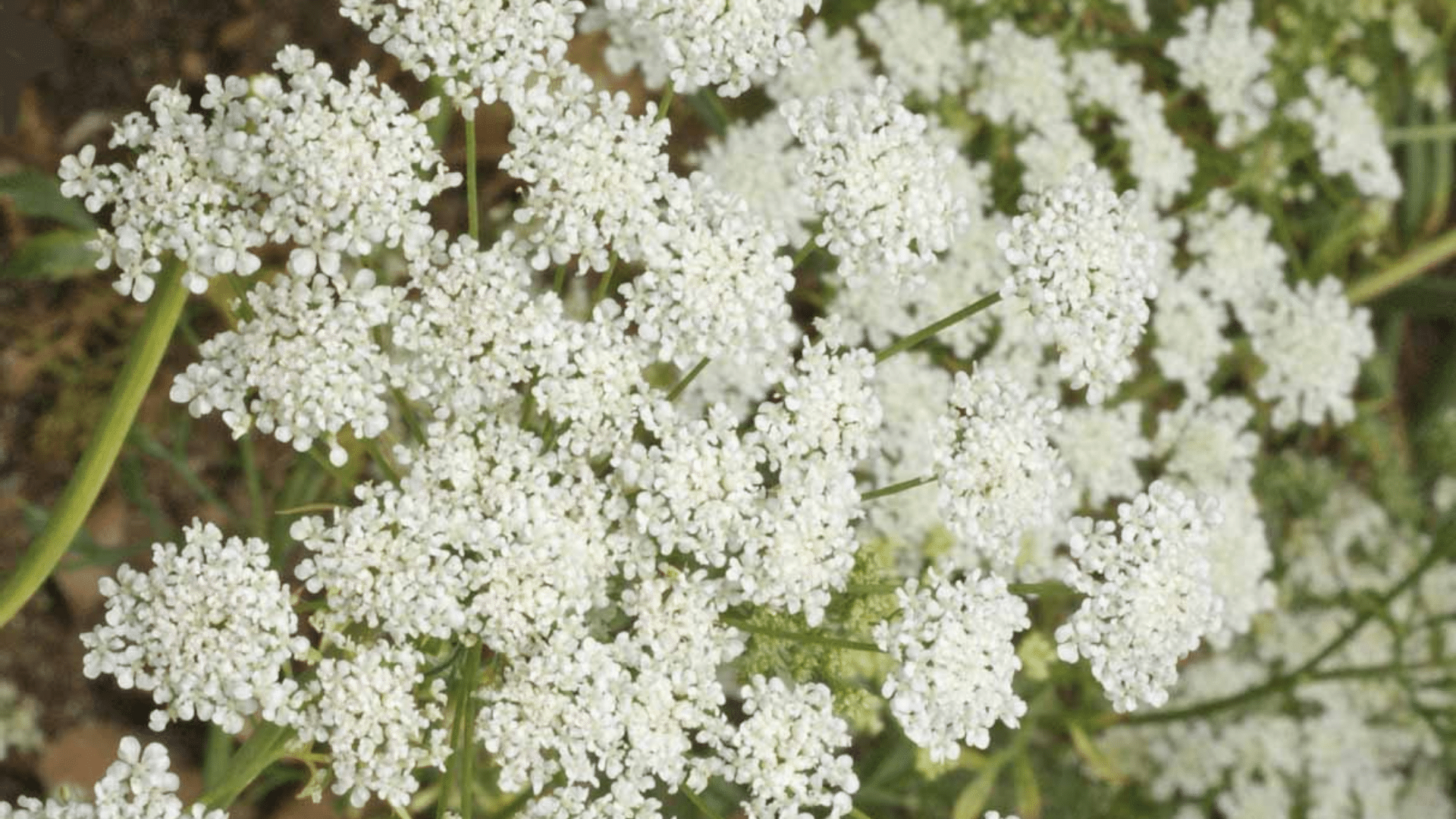
Bishop’s Flower, also known as Ammi majus, is an elegant flowering plant that produces lacy, white blooms resembling lace. Native to the Mediterranean and parts of Asia, it grows in a delicate, airy form, creating a soft, almost ethereal appearance in gardens.
It’s often used in cottage gardens and floral arrangements due to its beauty and ease of cultivation. The plant also attracts pollinators, especially beneficial insects like bees and butterflies.
| Scientific Name | Ammi majus |
|---|---|
| Commonly Found Region | Mediterranean, Asia |
| Blooming Period | Summer to fall |
| Symbolism | Purity, tranquility |
| Benefits | Attracts beneficial insects, supports pollination |
How to plant:
- Plant in well-drained, fertile soil.
- Position in full sunlight.
- Water regularly, ensuring the soil does not dry out completely.
Fun Fact: Bishop’s Flower is often referred to as “Queen Anne’s Lace” due to its similarity to the wildflower, though it has a more delicate and refined appearance.
7. Barrel Cactus Flower
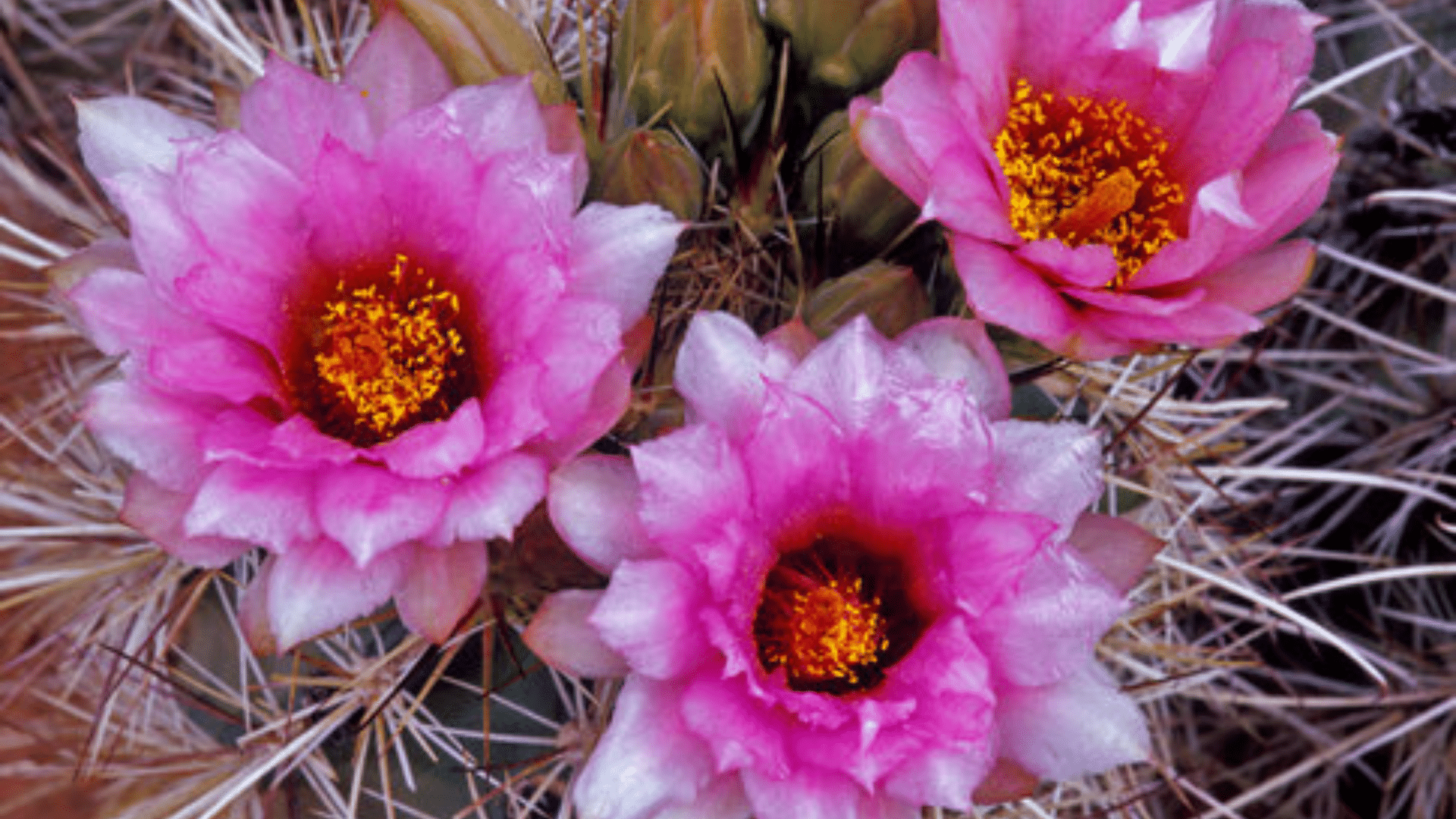
Barrel Cactus Flower blooms at the top of the cactus, often in pretty yellow, red, or orange colors. These flowers are short-lived but offer a stunning sight in desert landscapes.
Barrel cacti are native to arid regions and thrive in well-drained soil with minimal water. The flowers bloom after the cactus has reached maturity, usually during the spring, and attract pollinators such as bees and birds.
| Scientific Name | Ferocactus cylindraceus |
|---|---|
| Commonly Found Region | Southwestern United States, Mexico |
| Blooming Period | Spring to early summer |
| Symbolism | Endurance, protection |
| Benefits | Used in traditional medicine for dehydration relief |
How to plant:
- Plant in well-draining, sandy soil.
- Place in full sunlight.
- Water sparingly, especially during the winter months.
Fun Fact: Barrel cactus flowers bloom for only a few days, making them a rare and beautiful sight in the desert.
8. Barringtonia
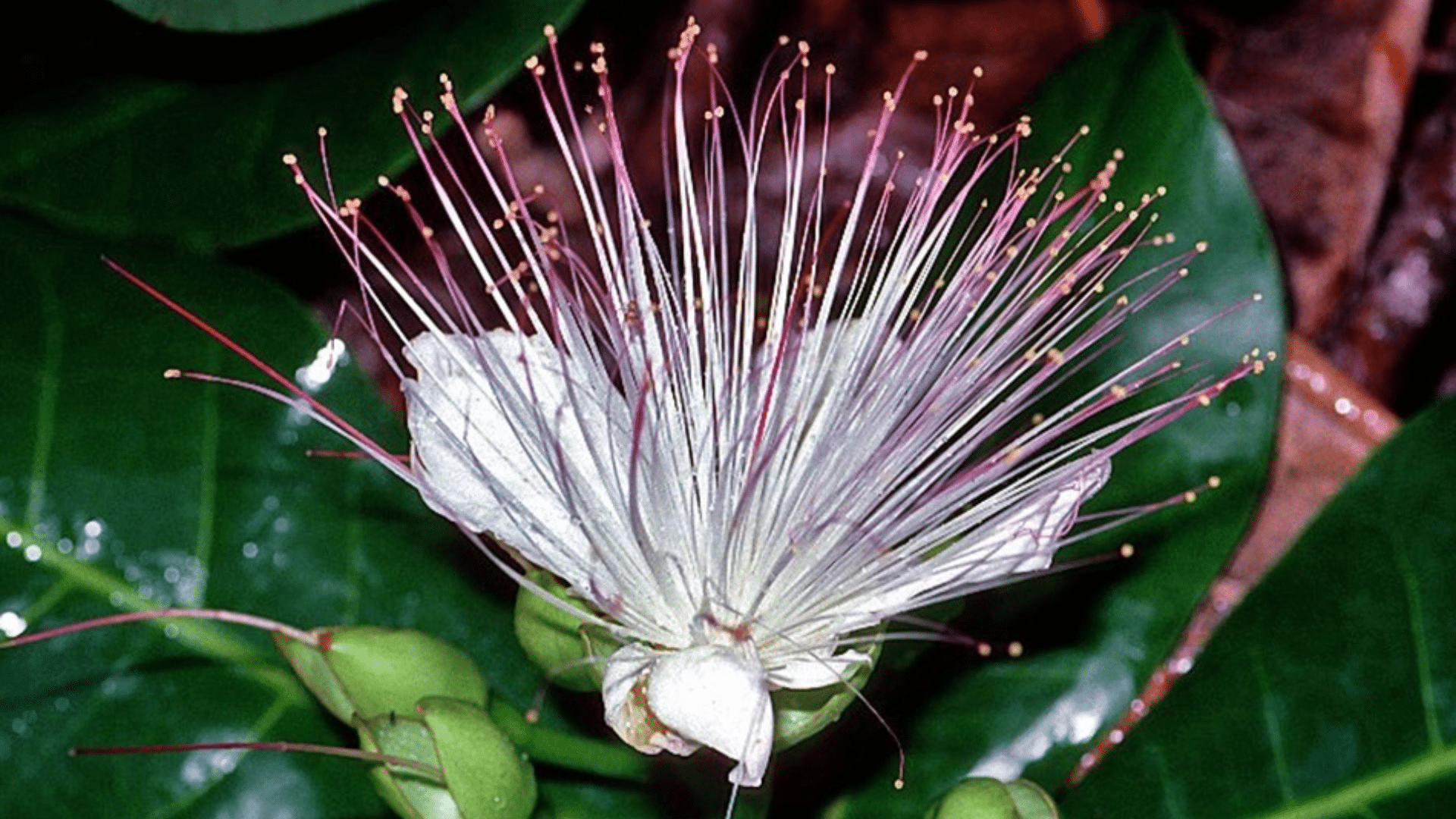
Barringtonia is a striking shrub that produces large, showy flowers resembling fishhooks, typically in shades of pink or white. It thrives along coastal regions, often found in tropical and subtropical climates.
The plant grows well in moist, well-drained soil and is often used as a shade plant in gardens. Barringtonia flowers attract various pollinators, including bats and moths, due to their strong fragrance.
| Scientific Name | Barringtonia asiatica |
|---|---|
| Commonly Found Region | Coastal areas of Asia, Pacific Islands |
| Blooming Period | Summer to fall |
| Symbolism | Hope, resilience |
| Benefits | The plant’s extracts are used in traditional medicine for skin conditions |
How to plant:
- Grow in moist, well-drained soil near water bodies.
- Plant in partial shade.
- Regularly water to keep soil moist but not soggy.
Fun Fact: Barringtonia flowers have a distinct, fishhook-like shape and are pollinated by bats.
9. Basil
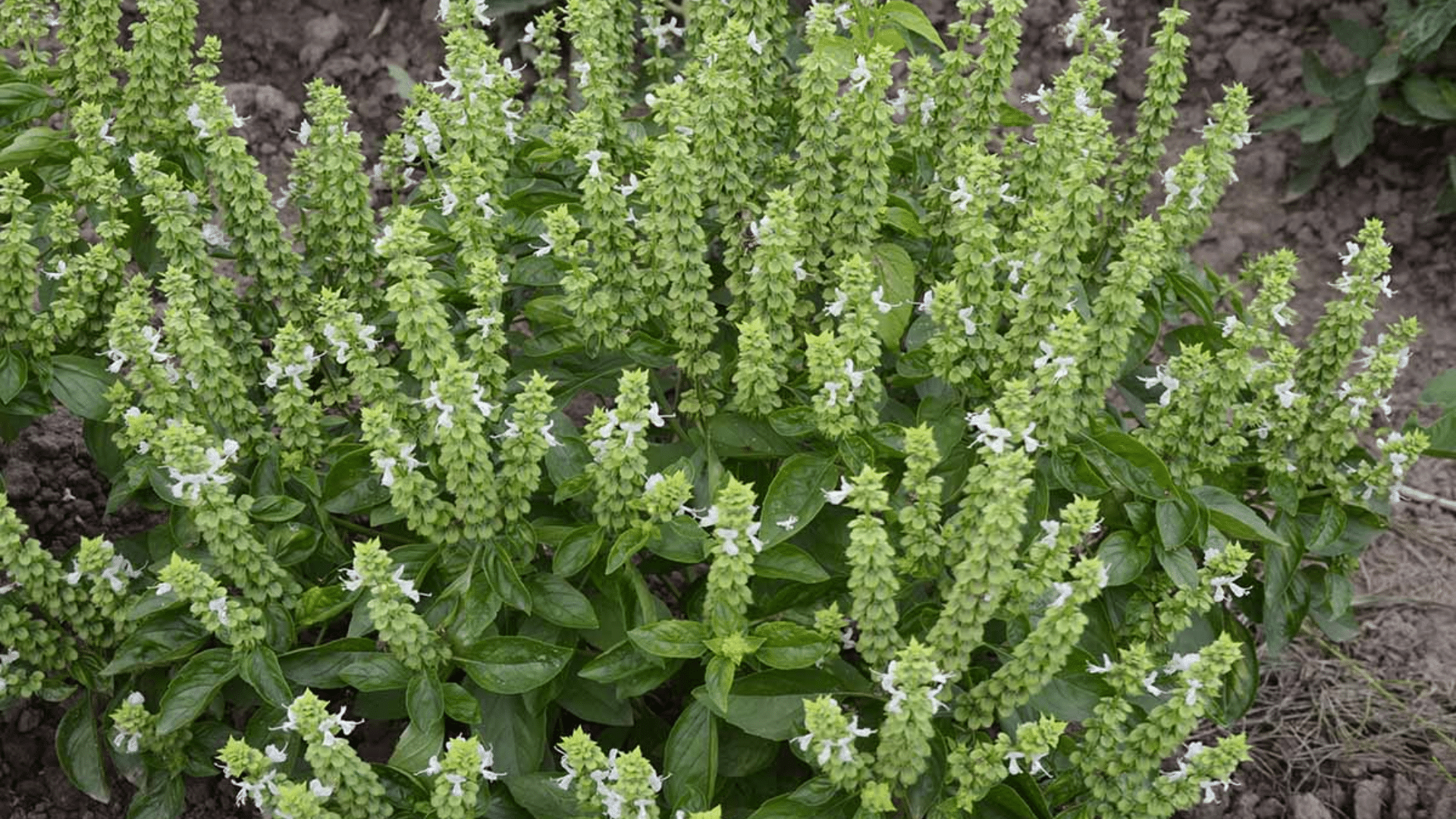
Basil is an aromatic herb that produces small white or purple flowers and has fragrant, glossy green leaves. It is commonly used in Mediterranean cooking, especially in pesto, salads, and pasta dishes.
The plant thrives in warm weather and full sunlight, making it perfect for kitchen herb gardens. In addition to its culinary uses, basil has medicinal properties, including antimicrobial and anti-inflammatory benefits.
| Scientific Name | Ocimum basilicum |
|---|---|
| Commonly Found Region | Mediterranean, Southeast Asia |
| Blooming Period | Summer |
| Symbolism | Love, good luck |
| Benefits | Rich in antioxidants, supports digestion |
How to plant:
- Plant in well-draining, rich soil.
- Position in full sunlight for best growth.
- Water moderately, allowing the soil to dry between waterings.
Fun Fact: Basil is often called the “king of herbs” due to its extensive culinary and medicinal uses.
10. Bay Laurel
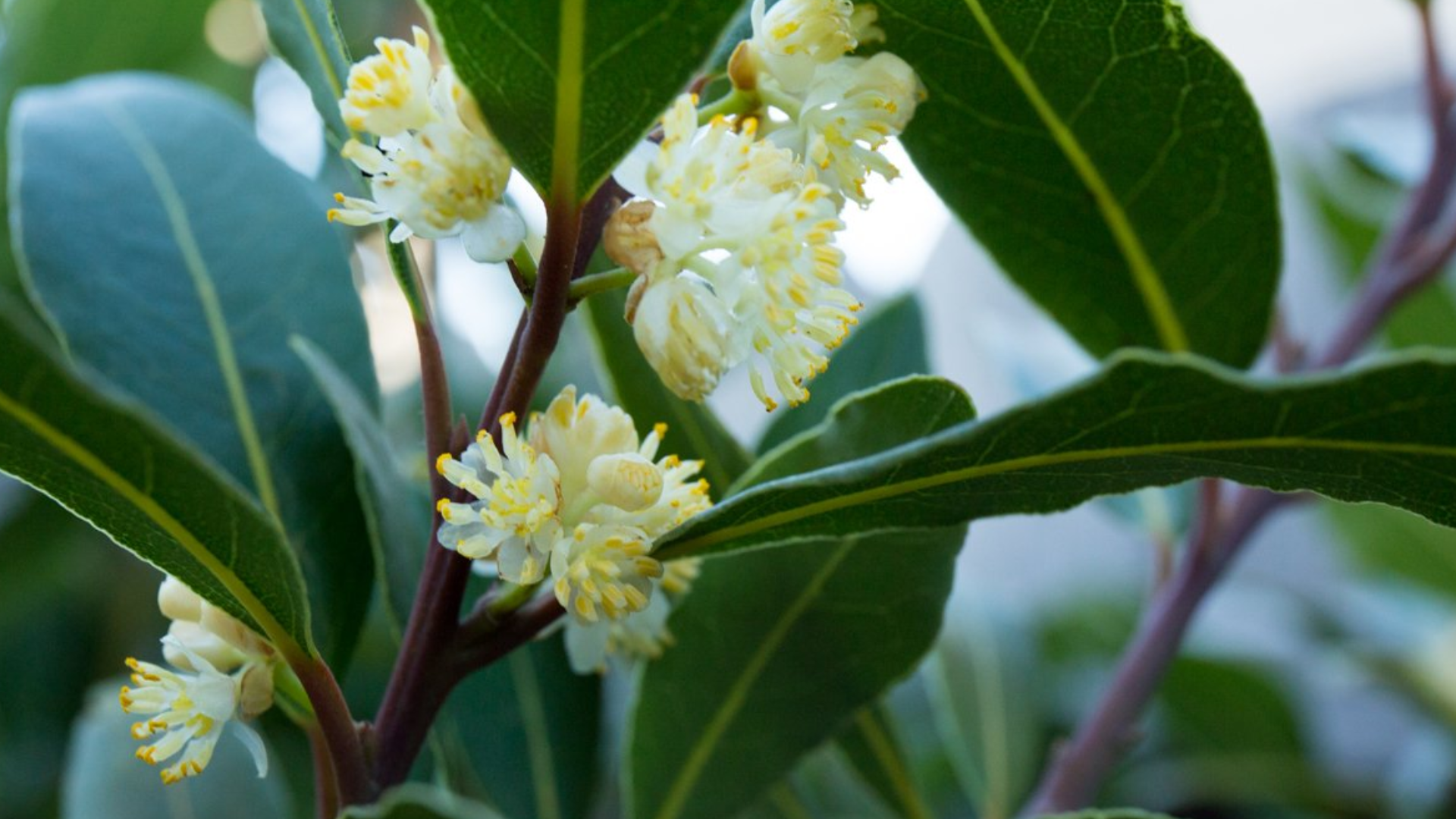
Bay Laurel is an evergreen shrub known for its glossy, aromatic leaves, which are commonly used as a seasoning in cooking. The plant produces small yellow-green flowers in spring, though they are often overlooked compared to the fragrant leaves.
It thrives in Mediterranean climates, preferring well-drained, slightly acidic soil. Bay Laurel also has a long history of use in ancient cultures, symbolizing honor and victory.
| Scientific Name | Laurus nobilis |
|---|---|
| Commonly Found Region | Mediterranean |
| Blooming Period | Spring to early summer |
| Symbolism | Victory, honor |
| Benefits | Used in cooking, helps with digestive health |
How to plant:
- Plant in well-drained, fertile soil.
- Position in full sunlight.
- Water moderately and trim regularly to maintain shape.
Fun Fact: Bay Laurel leaves were traditionally used to create laurel wreaths worn by victorious athletes and generals in ancient Greece and Rome.
11. Beach Strawberry
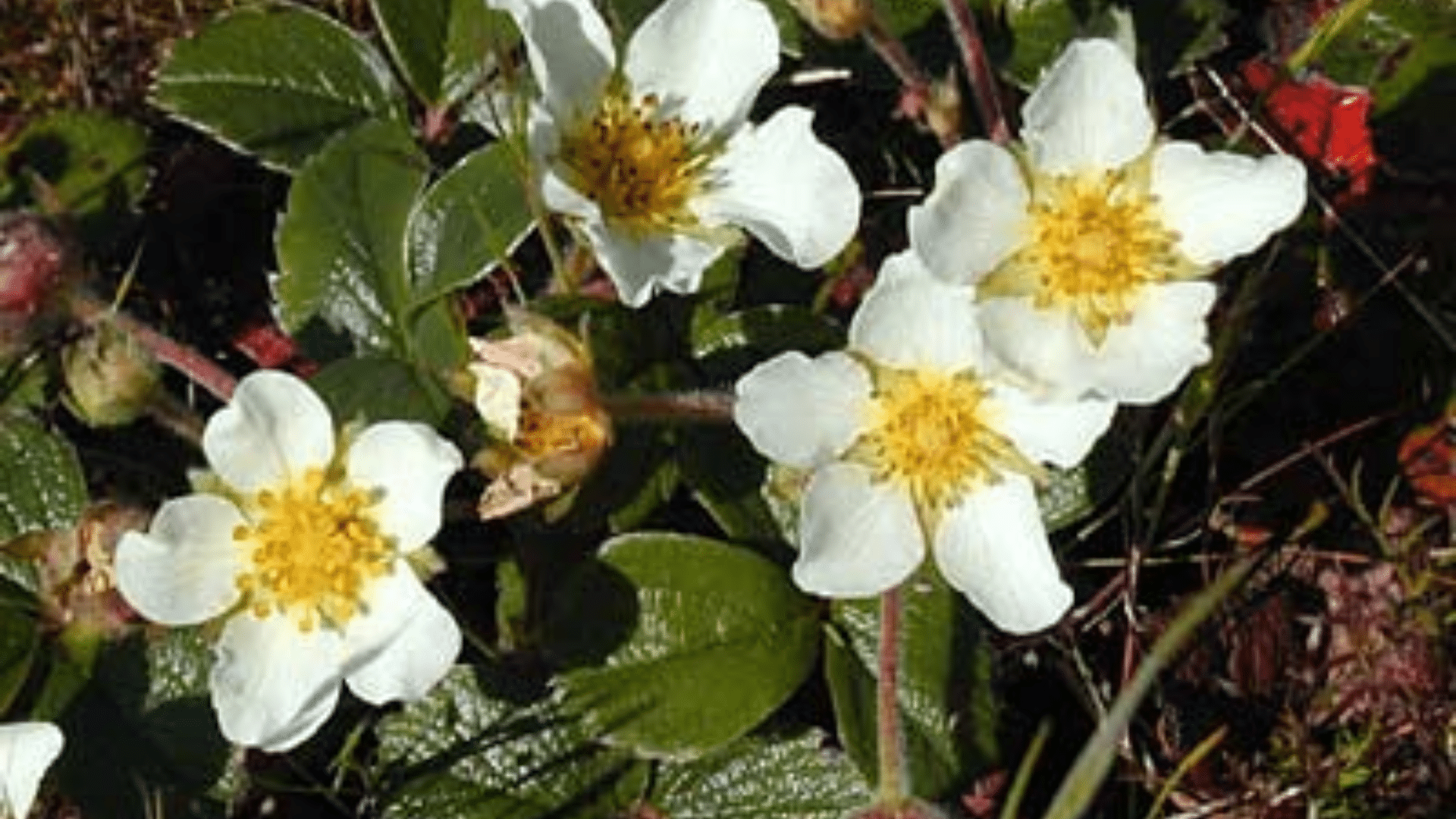
Beach Strawberry is a low-growing plant that produces small white flowers and bright red berries. It thrives in sandy, coastal soils and can often be found growing near the ocean.
The plant is a hardy species, resistant to drought and salt, making it perfect for coastal landscapes. The sweet berries are edible and often used in desserts, jams, and smoothies.
| Scientific Name | Fragaria chiloensis |
|---|---|
| Commonly Found Region | Coastal areas of North and South America |
| Blooming Period | Spring to summer |
| Symbolism | Sweetness, contentment |
| Benefits | High in vitamin C, supports skin health |
How to plant:
- Plant in well-drained, sandy soil.
- Grow in full sunlight for best results.
- Water regularly, especially during dry periods.
Fun Fact: The Beach Strawberry is a parent of the modern garden strawberry, cultivated worldwide.
12. Beardtongue
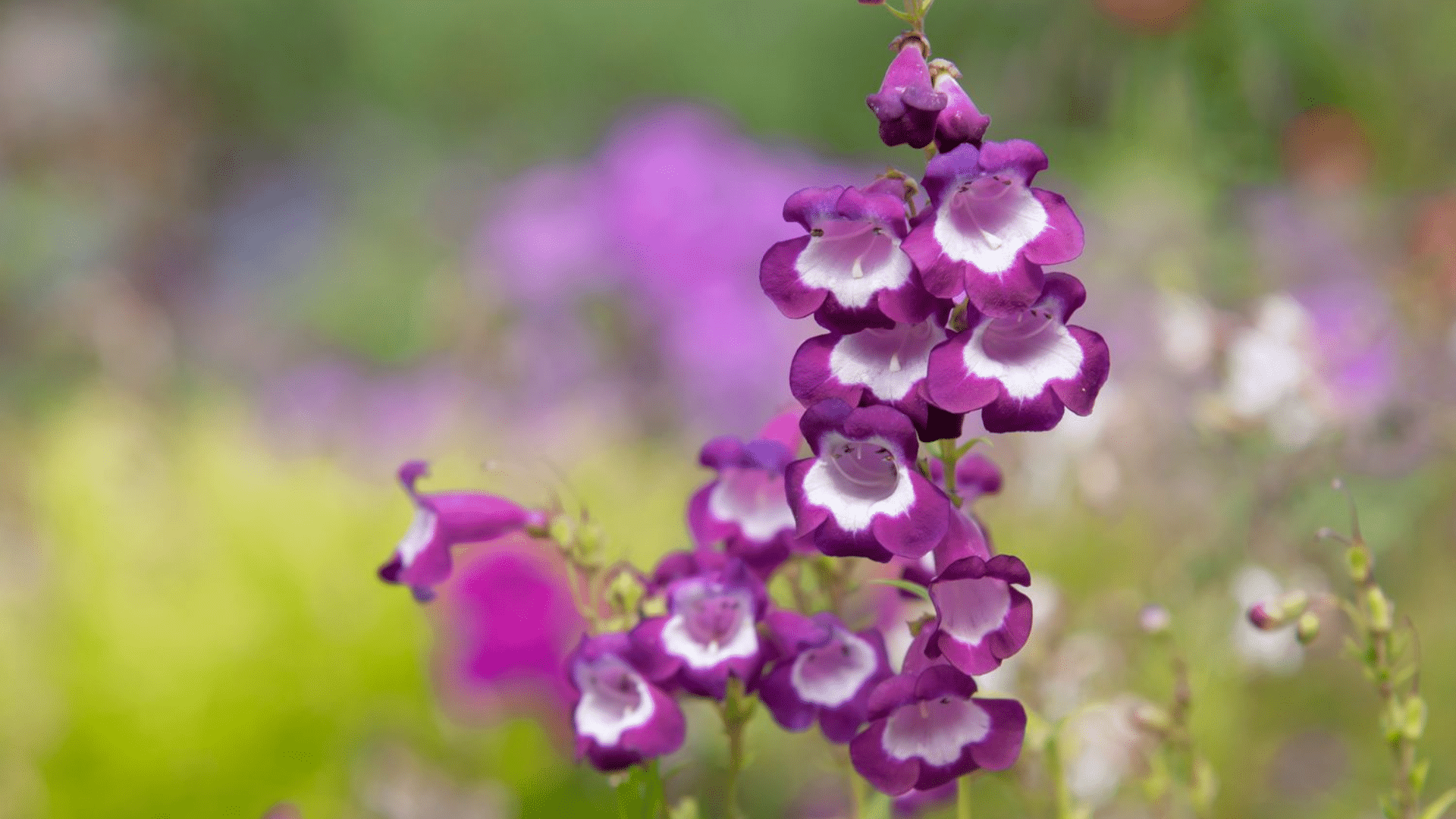
Beardtongue is a perennial flower that produces tall, slender spikes filled with tubular flowers in shades of purple, pink, or white. It thrives in well-drained, sandy soil and is often used in garden borders for its elegant, upright growth.
The plant attracts a variety of pollinators, including hummingbirds and bees. It blooms in late spring to early summer, making it a great addition to gardens with other early bloomers.
| Scientific Name | Penstemon |
|---|---|
| Commonly Found Region | North America |
| Blooming Period | Spring to summer |
| Symbolism | Grace, humility |
| Benefits | Attracts pollinators, drought-tolerant |
How to plant:
- Plant in well-drained, sandy or loamy soil.
- Position in full sunlight.
- Water lightly and ensure soil dries between waterings.
Fun Fact: Beardtongue flowers are named for their distinctive “bearded” stamens that resemble a beard.
13. Bear’s Breech
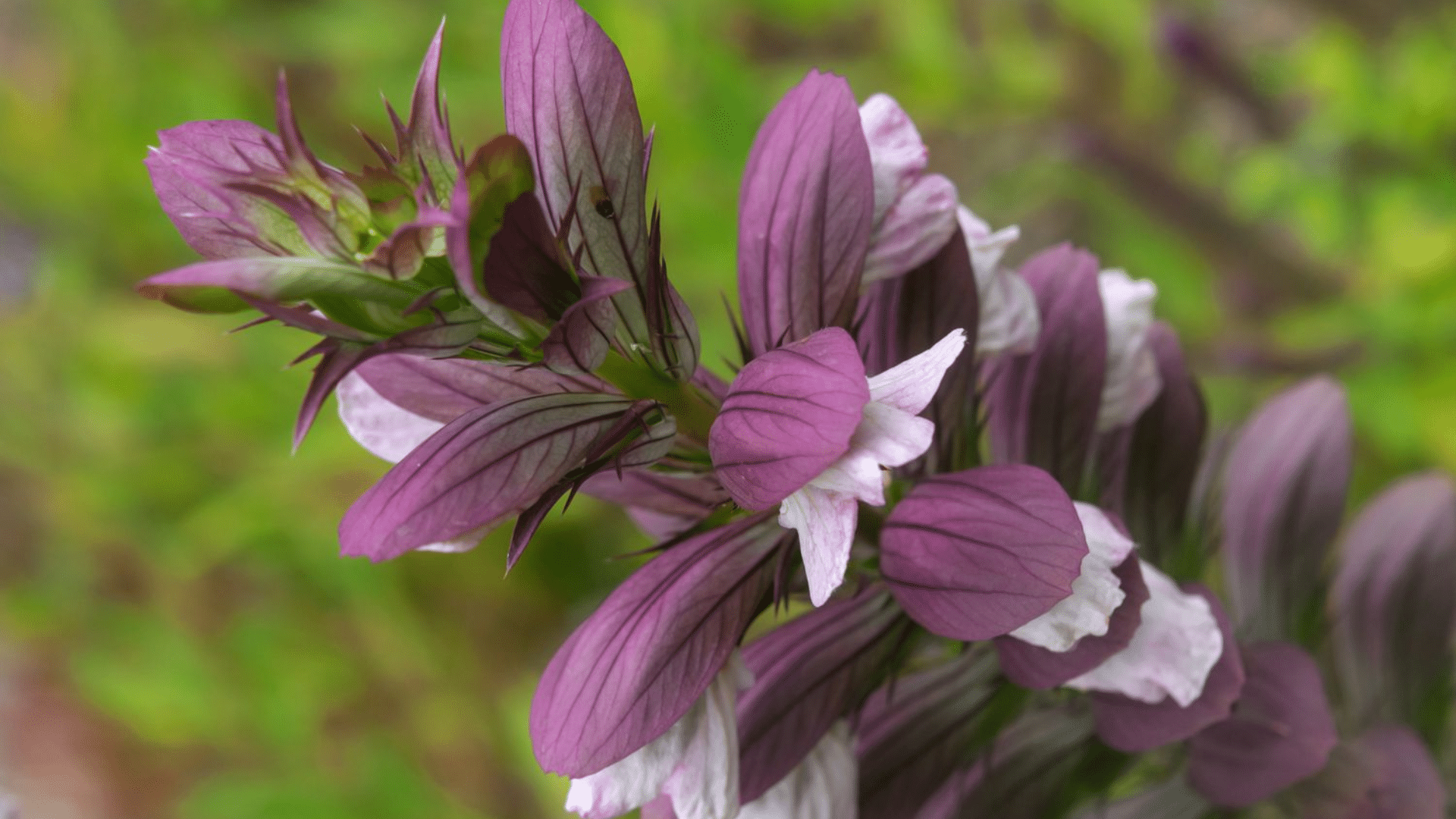
Bear’s Breech is a striking flower with tall, spiky blooms of white or purple flowers. It thrives in full sun or partial shade, making it a versatile addition to any garden.
The plant grows well in moist, well-drained soil and can reach impressive heights, creating a dramatic focal point in gardens. Bear’s Breech is often used in landscaping due to its architectural form and resilience.
| Scientific Name | Acanthus mollis |
|---|---|
| Commonly Found Region | Mediterranean region |
| Blooming Period | Summer |
| Symbolism | Strength, resilience |
| Benefits | Traditionally used to treat skin irritations |
How to plant:
- Grow in well-drained, fertile soil.
- Place in full sunlight or partial shade.
- Water moderately to avoid waterlogging.
Fun Fact: The leaves of the Bear’s Breech inspired the iconic acanthus leaf design used in classical architecture.
14. Beech Drops
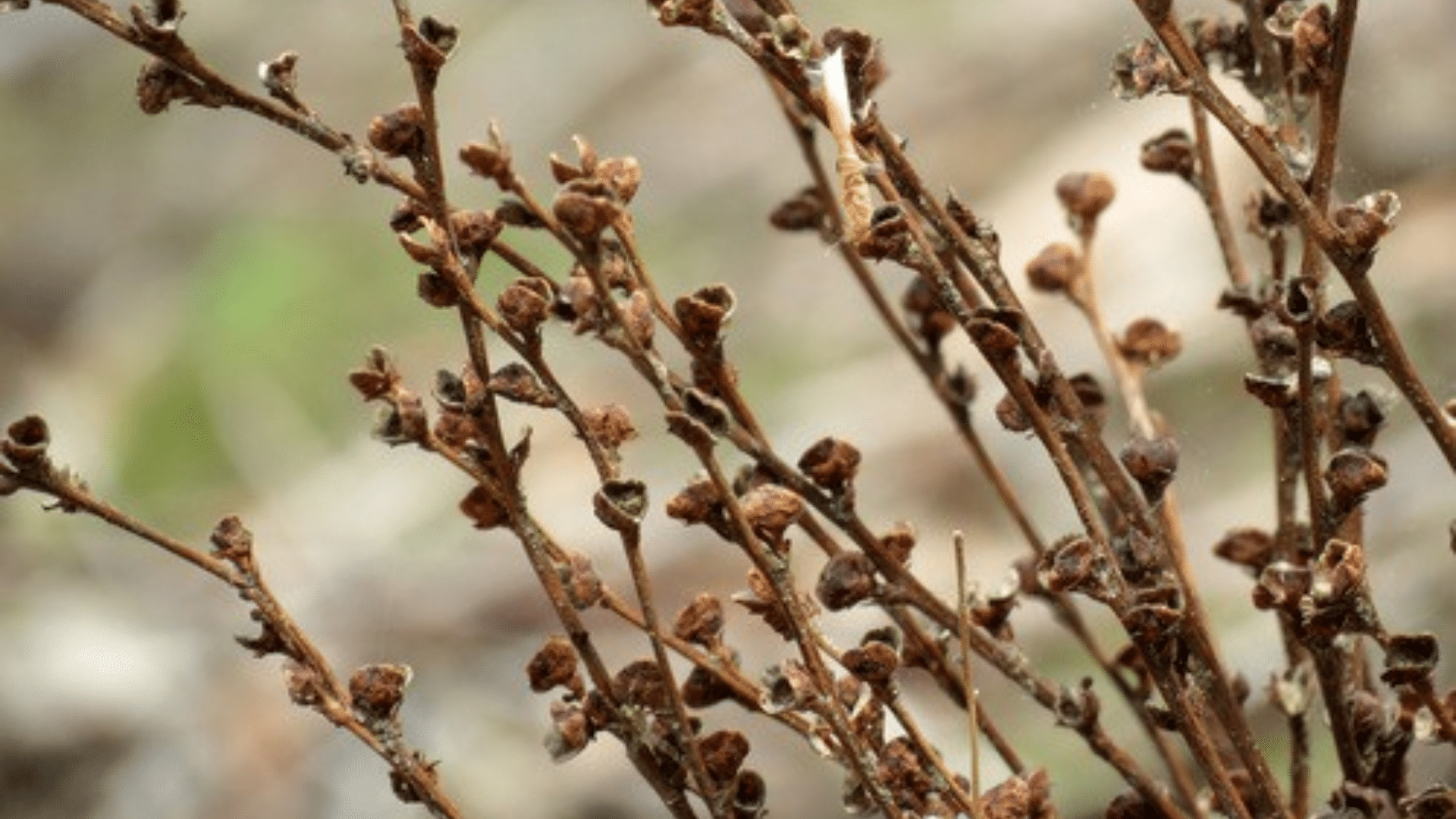
Beech Drops is a unique parasitic flower that grows on the roots of beech trees, producing tall, tubular flowers in shades of purple or brown. This flower does not require soil for nourishment, relying entirely on the host tree for nutrients.
It is typically found in shaded, forested areas, thriving in the organic matter of the forest floor. Beech Drops are relatively rare and are often overlooked in woodland gardens.
| Scientific Name | Epifagus virginiana |
|---|---|
| Commonly Found Region | North America |
| Blooming Period | Summer |
| Symbolism | Uniqueness, nature’s oddities |
| Benefits | Medicinal properties for fevers, sore throats |
How to plant:
- This flower requires a host tree (beech tree) for growth.
- Does not require direct soil planting.
- Typically found in shaded forests.
Fun Fact: Beech Drops are parasitic plants, meaning they rely entirely on the beech tree for nutrients.
15. Begonia
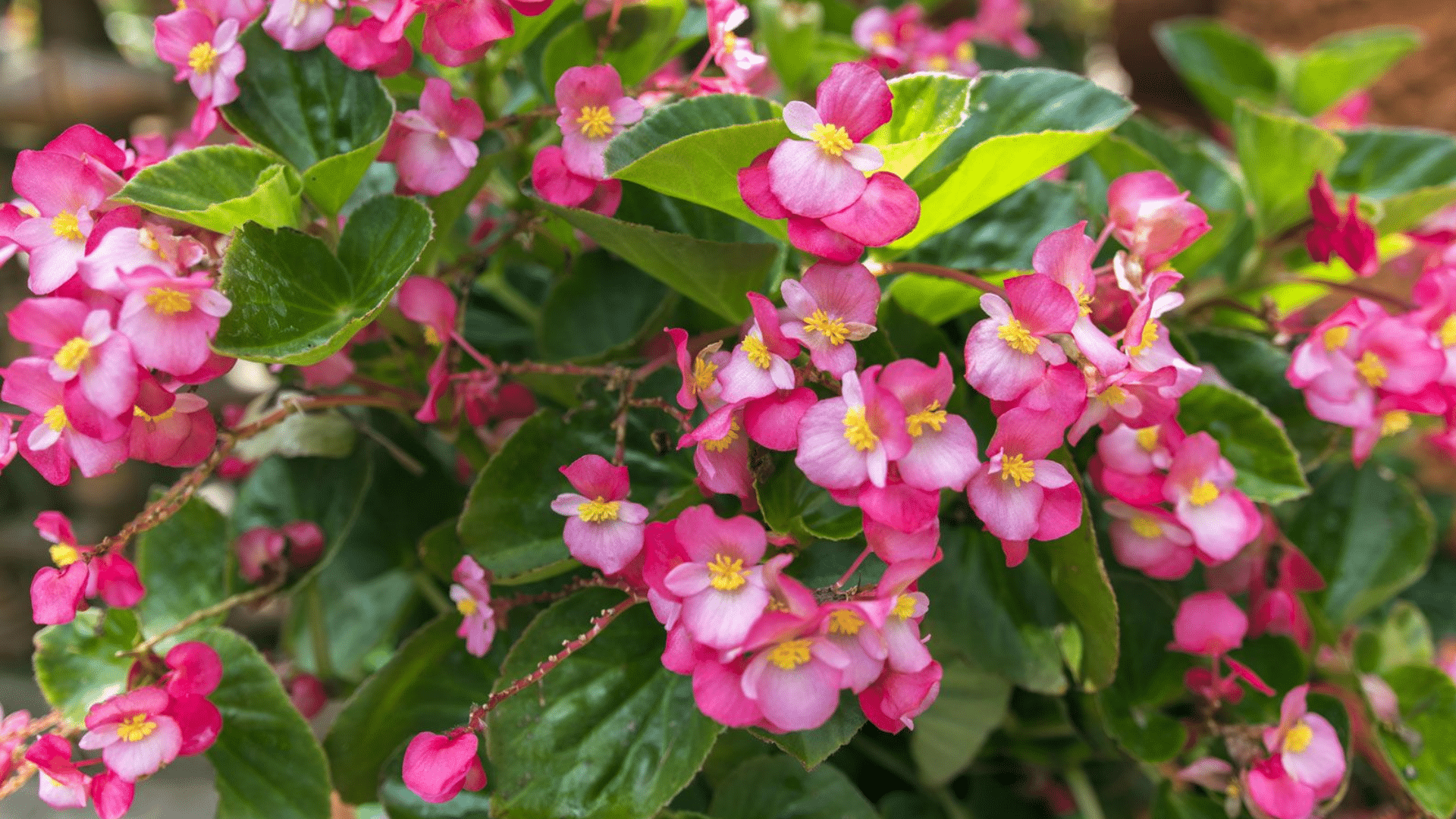
Begonias are ornamental plants prized for their colorful blooms in shades of red, pink, and white. They thrive in shaded areas and can be grown in containers or hanging baskets.
These plants produce both flowers and attractive foliage, often featuring interesting textures and patterns. Begonias are popular as houseplants or bedding plants, adding color to shady corners and patios.
| Scientific Name | Begonia |
|---|---|
| Commonly Found Region | Tropical and subtropical regions |
| Blooming Period | Spring to fall |
| Symbolism | Friendship, care |
| Benefits | Known for its anti-inflammatory properties |
How to plant:
- Plant in well-drained soil rich in organic matter.
- Prefers partial to full shade.
- Water regularly, allowing the soil to dry out between waterings.
Fun Fact: The genus Begonia was named after Michel Bégon, a French official and patron of botany.
16. Bellflower
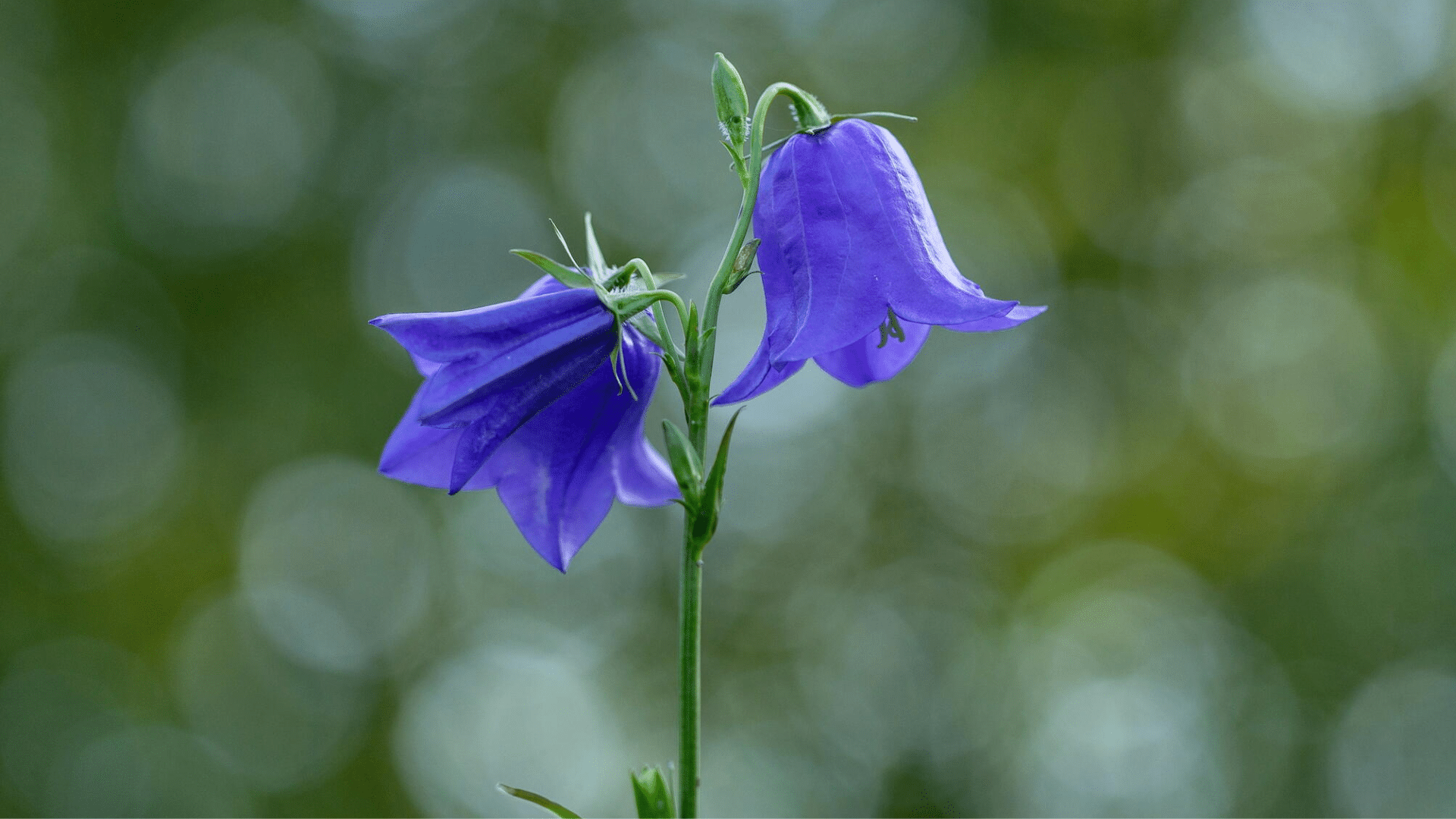
Bellflower is a versatile flowering plant with bell-shaped blooms in shades of blue, purple, and white. It grows well in a variety of garden conditions, from full sun to partial shade.
These flowers are a favorite in wildflower meadows and garden borders due to their charming appearance. Bellflowers attract pollinators like bees, making them an important addition to eco-friendly gardens.
| Scientific Name | Campanula |
|---|---|
| Commonly Found Region | Europe, Asia, North America |
| Blooming Period | Summer to fall |
| Symbolism | Gratitude, humility |
| Benefits | Used in traditional herbal remedies for respiratory health |
How to plant:
- Plant in well-drained soil.
- Position in full sunlight or partial shade.
- Water moderately, ensuring the soil is not waterlogged.
Fun Fact: Bellflowers are often used in floral arrangements for their delicate, bell-shaped blooms.
17. Bells of Ireland
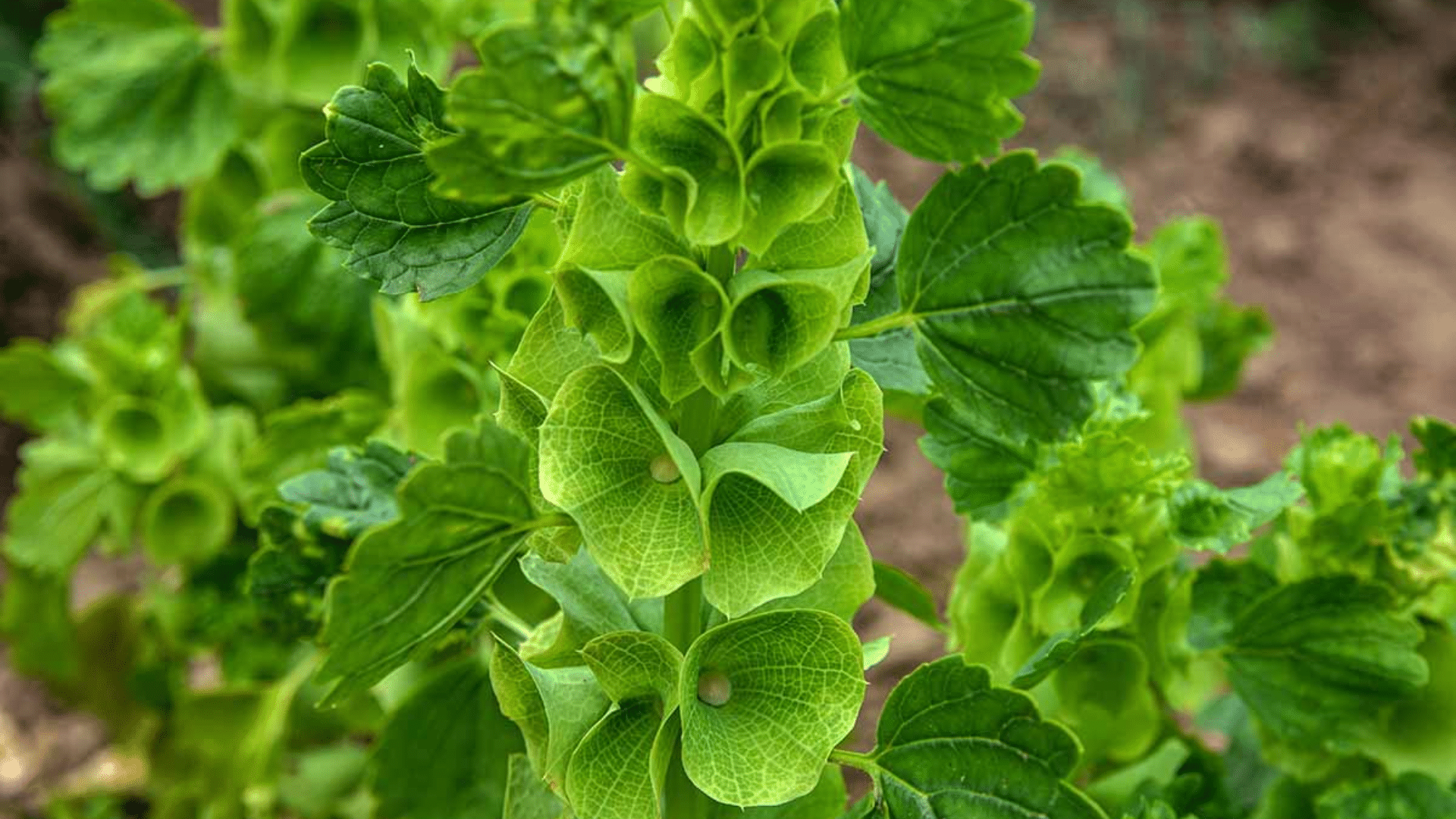
Bells of Ireland is known for its green, bell-shaped calyxes that surround small white flowers. The plant’s unique appearance makes it a favorite in floral arrangements, often used for its distinct shape and vibrant color.
It blooms in summer, thriving in full sunlight and well-drained soil. This flower is native to the Mediterranean and adds an unusual touch to both wild and cultivated gardens.
| Scientific Name | Moluccella laevis |
|---|---|
| Commonly Found Region | Mediterranean, Western Asia |
| Blooming Period | Late spring to summer |
| Symbolism | Good luck, prosperity |
| Benefits | Traditionally used in floral arrangements to symbolize good fortune |
How to plant:
- Grow in well-drained, fertile soil.
- Plant in full sunlight.
- Water moderately, ensuring the soil is not soggy.
Fun Fact: The “bells” are actually calyxes, the leaf-like structures that surround the true flowers, making them look like tiny bells.
18. Benedictine Flower
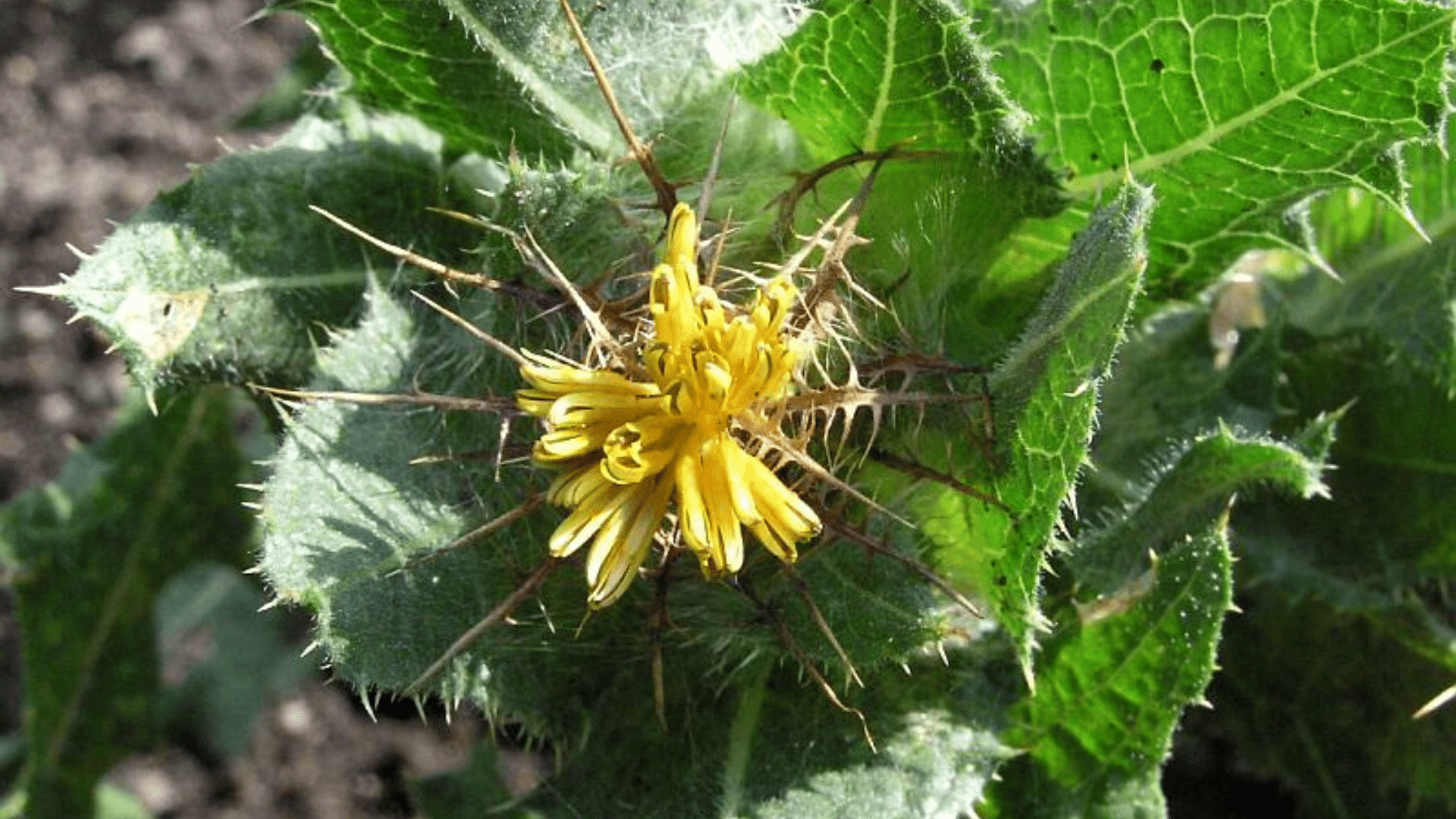
Benedictine Flower is a hardy, fragrant plant known for its small, colorful blooms. It is often grown in herb gardens, adding both ornamental and medicinal value.
The flower attracts pollinators and thrives in well-drained soil with partial sunlight. Historically, it was used in herbal remedies and is still cultivated for its medicinal properties in some cultures.
| Scientific Name | Centaurea benedicta |
|---|---|
| Commonly Found Region | Mediterranean region |
| Blooming Period | Summer to fall |
| Symbolism | Blessings, spiritual connection |
| Benefits | Used in herbal remedies, particularly for digestive health |
How to plant:
- Grow in well-drained soil with good sunlight.
- Water moderately, keeping the soil moist but not soggy.
- Prune regularly to maintain healthy growth.
Fun Fact: The Benedictine Flower was traditionally cultivated by monks for medicinal purposes and is sometimes referred to as “blessed thistle.”
19. Bindweed
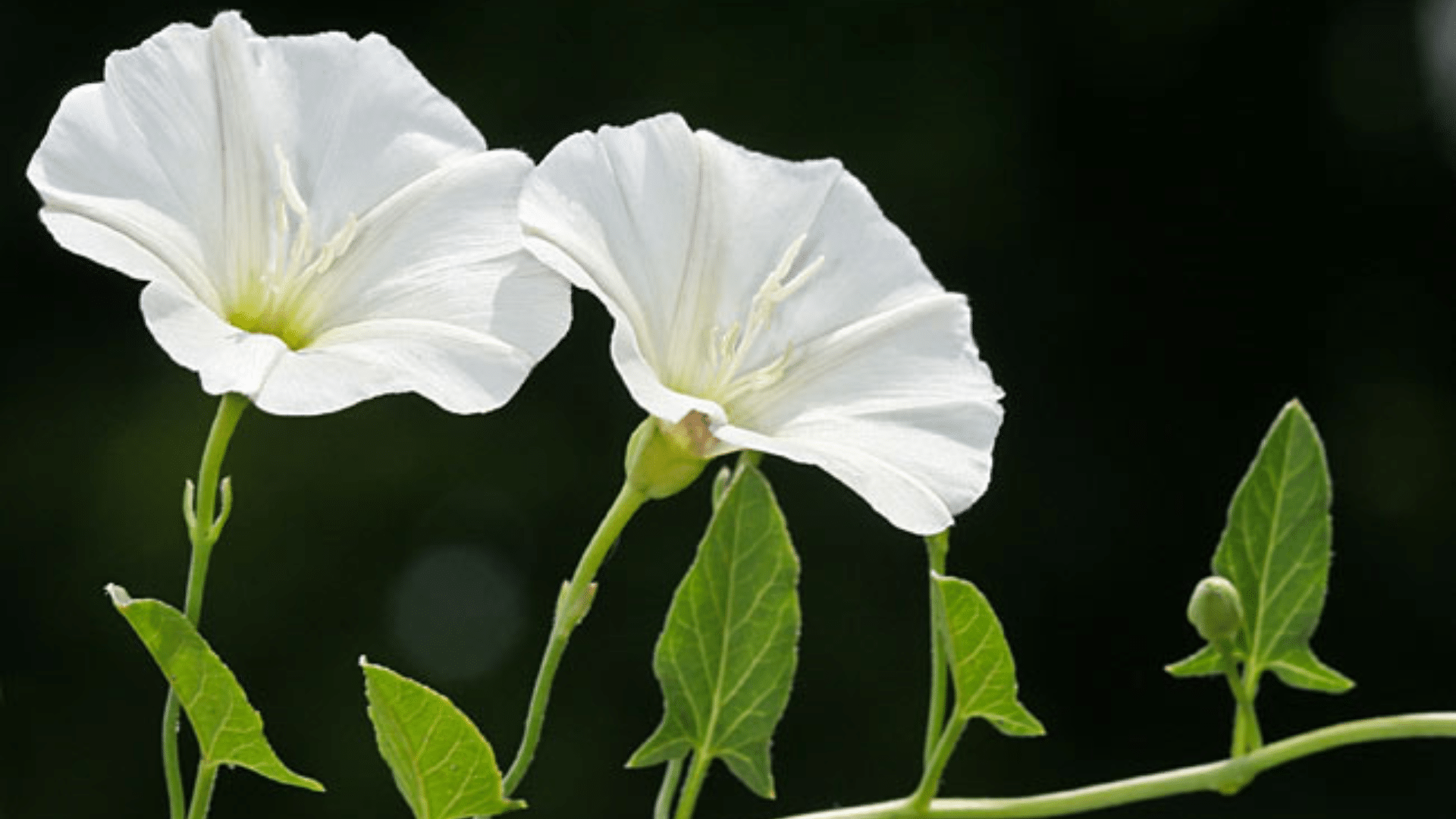
Bindweed is a fast-growing, climbing vine with funnel-shaped flowers in shades of white, pink, and purple. While it’s a beautiful flowering plant, it can be invasive and difficult to control in gardens.
Bindweed grows rapidly, often overtaking other plants and structures. It prefers full sunlight and well-drained soil, making it ideal for sunny, sprawling gardens.
| Scientific Name | Convolvulus arvensis |
|---|---|
| Commonly Found Region | Europe, North America |
| Blooming Period | Spring to autumn |
| Symbolism | Persistence, entanglement |
| Benefits | Used in folk medicine for digestive issues |
How to plant:
- Plant in moderately fertile soil.
- Prefers full sunlight.
- Water regularly to encourage growth, but monitor for aggressive spreading.
Fun Fact: Bindweed’s rapid growth and creeping nature have earned it the title of “morning glory,” though it can be invasive in some areas.
20. Bird of Paradise
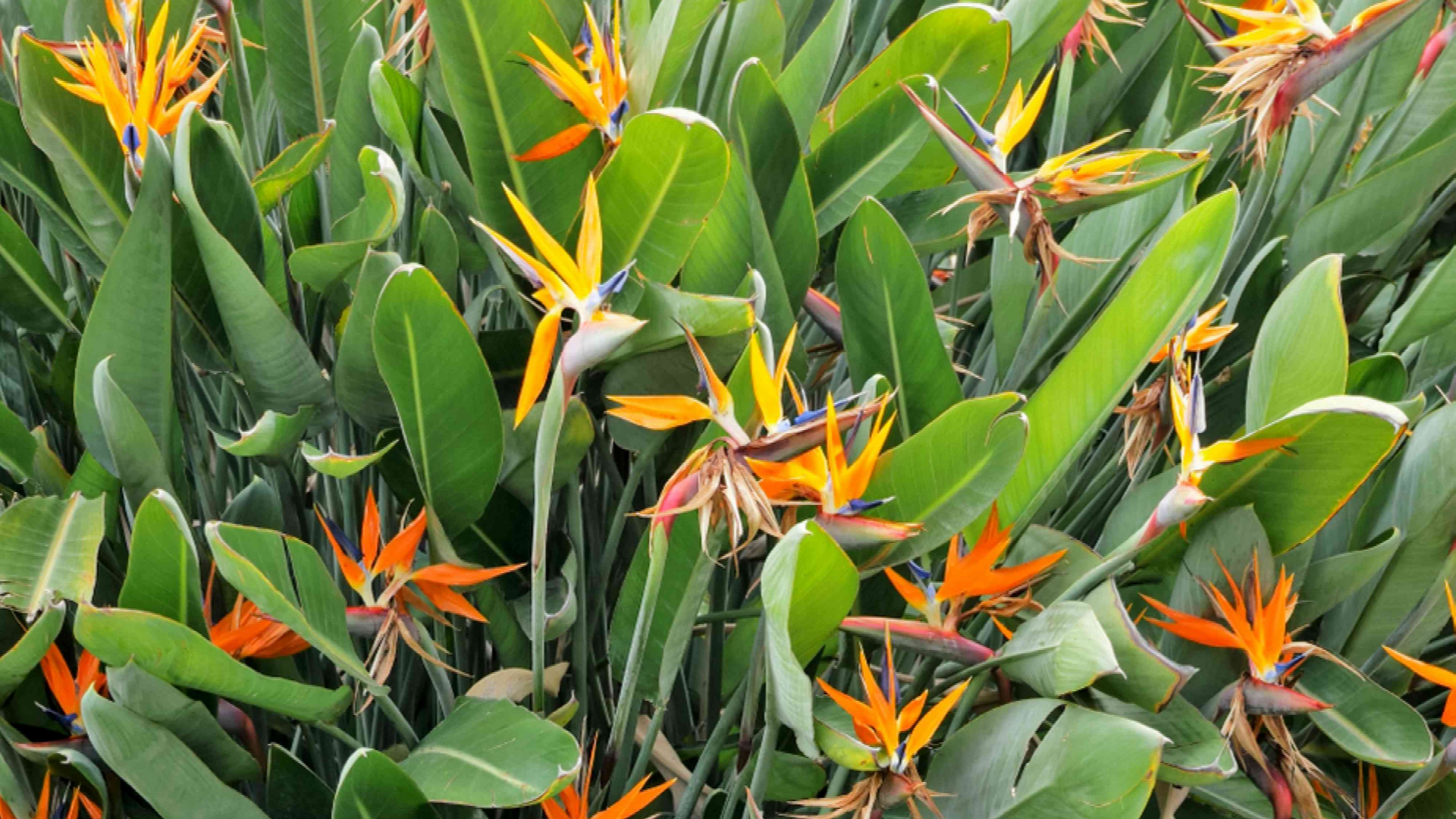
Bird of Paradise is a tropical flowering plant with large, vibrant flowers that resemble a bird in flight. The plant produces stunning blooms in orange, blue, and purple, often used as an ornamental feature in gardens and indoors.
Native to South Africa, it requires warm climates and full sunlight to thrive. Bird of Paradise attracts hummingbirds and other pollinators with its striking, colorful flowers.
| Scientific Name | Strelitzia reginae |
|---|---|
| Commonly Found Region | South Africa, tropical regions |
| Blooming Period | Year-round, peak in winter |
| Symbolism | Freedom, magnificence |
| Benefits | Known to improve air quality, often used as a decorative flower |
How to plant:
- Plant in well-drained, fertile soil.
- Position in full sunlight for maximum blooming.
- Water deeply but allow soil to dry out between watering.
Fun Fact: Bird of Paradise flowers are named for their unique shape, which resembles a bird’s head and beak.
Native & Exotic Beautiful Flowers That Start With B
21. Birdsfoot Trefoil
22. Birch Tree Flower
23. Bitter Cress
24. Black-eyed Susan
25. Blackthorn
26. Bladder Campion
27. Blanket Flower
28. Bluebell
29. Bluebonnet
30. Blue-Eyed Grass
31. Bluehead
32. Blue Lobelia
33. Blue Lotus
34. Blue Sage
35. Bluestar
36. Borage
37. Boronia
38. Bottlebrush
39. Bougainvillea
40. Bouvardia
41. Boxwood
42. Bracteantha
43. Bridal Wreath
44. Broadleaf Arrowhead
45. Broom
46. Brooklime
47. Brown-eyed Susan
48. Buckeye Flower
49. Buddleia
50. Buffaloberry
51. Bullrush
52. Burbank’s Yellow
53. Burdock
54. Buttercup
55. Butterfly Bush
56. Buttonbush
57. Baby’s Breath
58. Backlit Begonia
59. Ball Cactus
60. Banana Blossom
61. Barbary Fig
62. Basal Rose
63. Bean Blossom
64. Begonette
65. Belladonna Lily
66. Borneo Orchid
67. Boerhavia
68. Bollworm Flower
69. Borassus Palm
70. Bottlebrush Buckeye
71. Brachycome
72. Broomweed
73. Basketflower
74. Bacopa
75. Balsam Apple
76. Balsam Pear
77. Bat Flower
78. Bellflower (Campanula)
79. Bengal Lily
80. Bentonia
81. Big-Flowered Fuchsia
82. Bird-of-Paradise Plant
83. Black Tulip
84. Black Locust
85. Blushing Bride
86. Blushing Princess
87. Bluebell Hyacinth
88. Bluefaced Leek
89. Bok Choy Flower
90. Bower Vine
91. Boxer Flower
92. Branched Lobelia
93. Brazilian Beauty
94. Brazilian Button Flower
95. Brighter Lilies
96. Bronze Cabbage
97. Brunnera
98. Burgundy Orchid
99. Butterfly Weed
Conclusion
Flowers that start with B bring a special touch to any garden with their variety and beauty. This guide has shown just how many options exist within this single letter of the alphabet.
From the familiar Begonia to the lesser-known Butterfly Weed, these plants offer something for every garden setting and style.
The world of B-named flowers extends beyond what many gardeners might expect. With options that thrive in sun, shade, dry soil, or moist conditions, there are B flowers suitable for any growing environment.
Readers can use this information to select plants that match their specific garden needs and aesthetic preferences.
For those looking to expand their plant knowledge or add new varieties to their gardens, flowers that start with B provide an excellent starting point with their diverse colors, forms, and growing habits.

